
 Australia
Australia
About the latest industry news and our offers by subscribing to our newsletters
x Australia
Australia





Registration for Bootcamp @ Jim Stynes Room A

Bootcamp : Roadmap in Mastering AI in Total Cost Management
This intensive one-day bootcamp course is part of Day 1 (24 November 2025) of Project Controls Expo Australia, held at the Melbourne Cricket Ground (MCG). It is designed for professionals looking to enhance their skills in data analytics and how these are applied in Total Cost Management. Participants will delve into intermediate (and some advanced) techniques and tools used in data analysis, visualization, interpretation, and decision-making. Attendees will examine the techniques of data and analytics in a real-world setting to assist them in fine-tuning their fluency with data concepts, challenges, and applications. By the end of the bootcamp, participants will understand the requirements to: - Understand how to apply and interpret key analytic types to improve project decisions. - Learn how AI and machine learning enhance forecasting, cost, and risk insights. - Define use cases for specific organizational needs to construct prediction models. - Grasp how generative AI and language models support automation in project controls
Speaker :


Partner Showcase Setup (Partners Only) @Olympic Room B

Women in Project Controls Networking Evening : Women in Project Controls Networking Evening at Pullman Melbourne On The Park
We are thrilled to invite you to our inaugural Women in Project Controls Networking Evening—an exclusive opportunity to connect with Australia's leading female professionals in project controls. Whether you have five minutes or two hours, this event is designed to fit seamlessly into your schedule. Engage in meaningful conversations, share experiences, and expand your professional network in a relaxed and welcoming atmosphere. This is additional networking evening before Project Controls Expo Australia Please see event details below: Date: 24th November Time: 5:30 - 7:30 pm AEDT Location: 192 Wellington Parade, East Melbourne VIC 3002 Entry: Free Food and beverages: Drinks and beverages will be available for purchase at the venue.
Speakers :
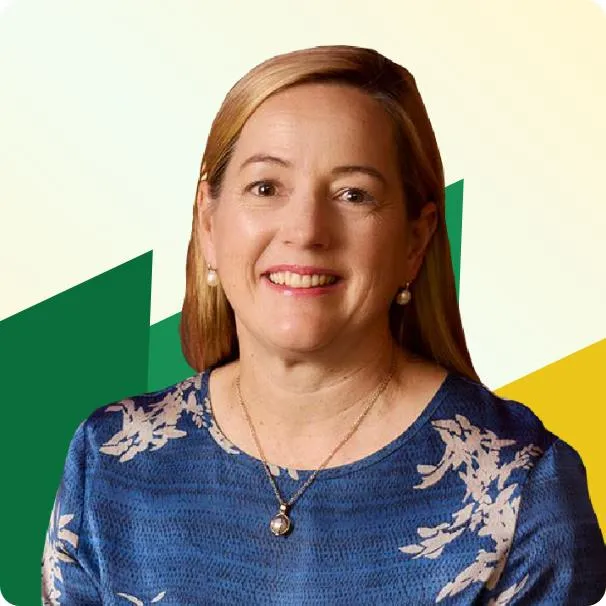

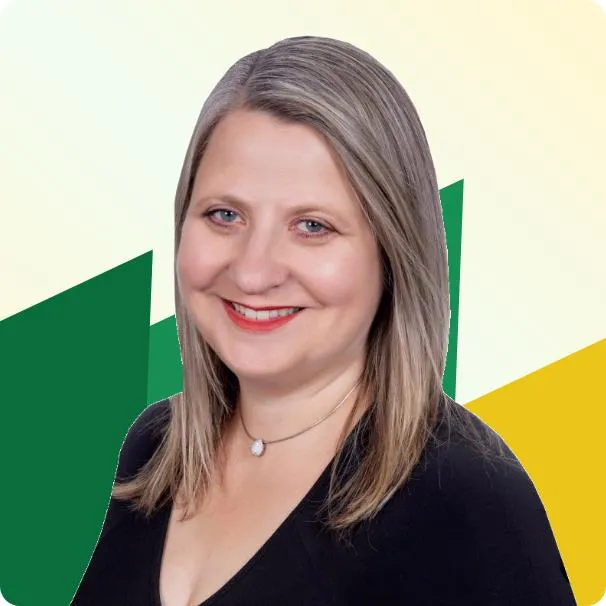



Registration @ Gate 3 Entry



Keynote : The Strategic Value of Cost Engineering in a Transforming Energy Sector
In today’s rapidly evolving energy landscape, cost engineers are uniquely positioned to influence both project outcomes and enterprise strategy. As the energy sector undergoes rapid transformation driven by decarbonization, digitalisation, and shifting regulatory frameworks, cost engineers and project controls specialists are increasingly called upon to navigate complexity and deliver value beyond traditional metrics. The pressure to accelerate delivery and reduce costs can lead to “false efficiencies”—decisions that appear beneficial in the short term but introduce hidden risks, compromise compliance, and diminish long-term value. This presentation explores how cost engineers can identify and challenge such inefficiencies, safeguard regulatory and commercial integrity, and support agile, value-driven decision making. It also underscores the need for cost engineers to actively influence capital investment decisions and shape enterprise strategy, positioning them as essential contributors to sustainable business outcomes. Attendees will gain practical insights into applying core competencies such as data analysis, risk evaluation and holistic problem-solving to drive sustainable, value-based decisions across projects and enterprise strategy. The session enable professionals to expand their impact to support industry resilience, smarter investments, and sustainable growth in rapidly evolving industries.
Speaker :


Headline Partner Remarks by :
Speaker :

Session P1 : The Future of Project Controls: How the Next 5 Years Could Redefine Mega Projects and Project Controls
As mega projects grow in complexity and ambition, the next five years will redefine how we plan, govern, and deliver at scale. This session explores how AI, collaborative contracts, sustainability, and emerging global challenges are reshaping the DNA of project controls. From predictive analytics to ethical data use, the future of control is no longer about oversight — it’s about foresight. Join this conversation to discover the capabilities, mindsets, and systems that will distinguish tomorrow’s leading projects.
Speaker :
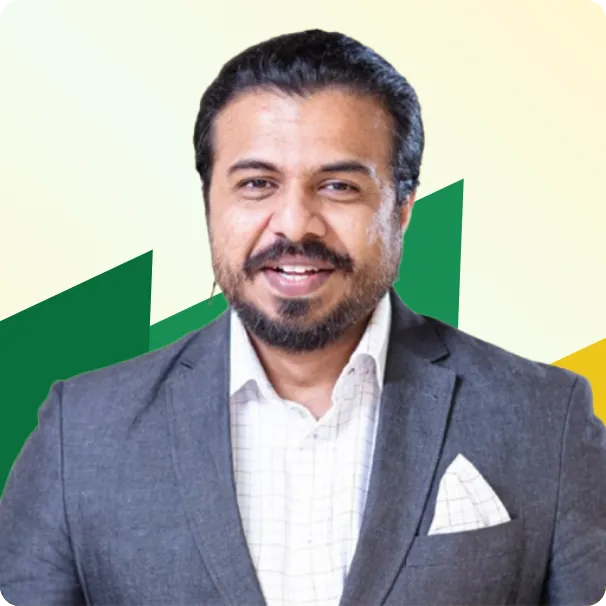

PD.3-P : Planning at Scale: Lessons from Megaprojects
Megaprojects present a scale of complexity rarely seen elsewhere: thousands of interdependent activities, dozens of subcontractors, constantly shifting site conditions, and client expectations measured in billions. This panel brings together three senior voices with diverse perspectives to explore how planning at scale really works in practice. From leadership in planning and delivery on the Torrens to Darlington Project, to project controls experience on the Western Harbour Tunnel, through to an academic and consultancy perspective on risk and data, the conversation spans practice, strategy, and research. Together, the panel will unpack why even the most carefully developed programs can drift, and share the lessons, tools, and strategies needed to keep multi-billion-dollar projects on track.
Speakers :




Keynote Panel Discussion : Evolution of Project Controls in next 5 years. (Role of AI, Data Driven insights, and its influence on mega projects)
Speakers :
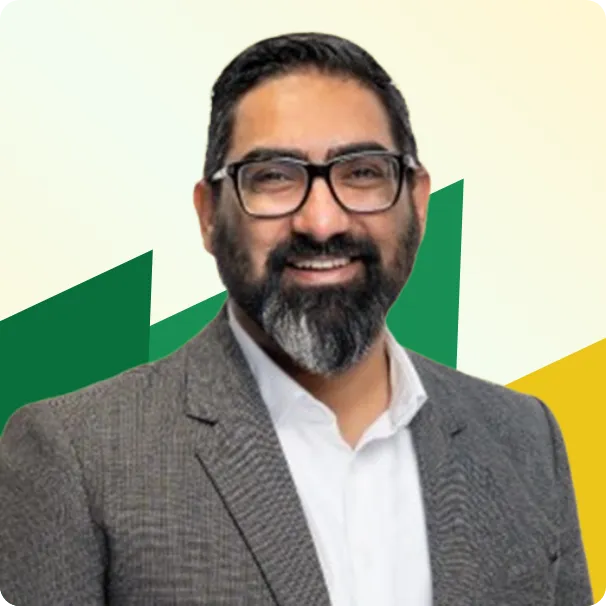


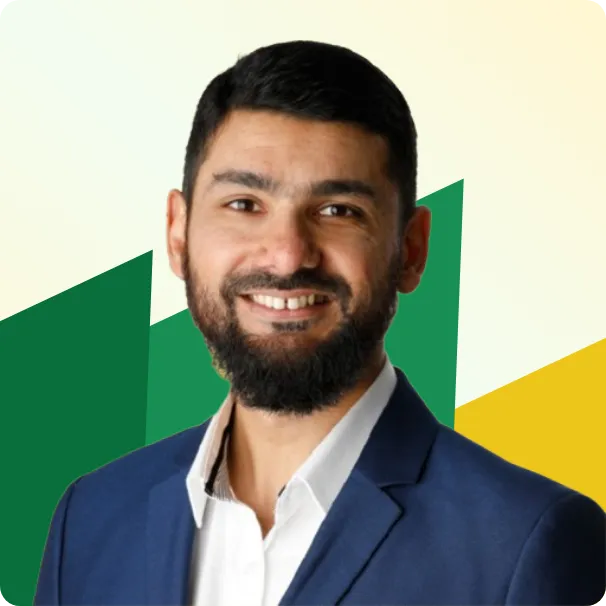


Session P4 : Navigating Uncertainty: Lessons from Managing Innovation in Defence Projects
This presentation explores the complexities of managing innovative defence projects with undefined scope, objectives, and timelines. Focusing on a selected project, I examine real-world challenges such as shifting requirements, technological ambiguity, and stakeholder alignment. Through this case study, I identify key management hurdles and extract practical lessons for handling uncertainty, fostering innovation, and steering such projects toward success despite initial vagueness and evolving goals.
Speaker :


PD.7-P : Before We Die Out: Engaging New Blood in Project Controls
Speakers :





Session P6 : Beyond Guesswork: How Monte Carlo Simulation Transforms Risk into Actionable Insight in Project Controls
Many project environments still rely on deterministic estimates that give an illusion of precision but fail to reflect real uncertainty. This session challenges that mindset and explores how probabilistic risk quantification provides a more realistic, transparent, and defensible view of project outcomes. Through a live demonstration, we’ll open up the black box of Monte Carlo simulation to reveal what actually happens during a risk simulation, how risks interact, how cost and schedule exposures evolve, and why understanding uncertainty is essential for credible forecasting and contingency planning. Attendees will leave with a clear understanding of how probabilistic approaches enhance project controls, improving confidence, visibility, and the quality of decisions made under uncertainty.
Speaker :

Session P7 : The Capability Trap in Megaprojects — Adapting to Complexity Before It’s Too Late
In the world of construction megaprojects, complexity is not just a challenge. Yet many teams fall into a hidden performance trap: the capability trap, where short-term delivery pressures erode long-term effectiveness. This session explores how megaproject teams can recognize and escape this trap by embracing adaptive strategies that build resilience and sustain performance under pressure. --- Part 1: Recognizing the effects of Trap Despite sophisticated tools and rigorous controls, megaprojects often suffer from recurring issues, delays, cost overruns, and reactive firefighting. This section unpacks the systemic dynamics behind these patterns, showing how well-intentioned decisions can unintentionally degrade team capability and project health. We’ll explore real-world signals of the trap, including burnout, brittle processes, and diminishing returns on effort. --- Part 2: Understanding the Mechanics of the Trap The capability trap often begins with a familiar dilemma: under pressure, teams choose to work harder rather than smarter. While this may yield short-term gains, it sets off a reinforcing loop where declining capability leads to even more pressure, and even less time to invest in smarter ways of working. This is the J-curve in action: efforts to improve capability often make things feel worse before they get better. --- Part 3: Escaping the Trap — Strategies for Resilient Delivery Finally, we’ll focus on practical strategies to escape or avoid the capability trap. These include: · Investing in Skills, Digital tools and governance. · Embedding feedback loops to detect early signs of strain · Specific strategies for specific common traps in Design, Quality, Reporting and Procurement.
Speaker :

Session C1 : Securing QLDs Water future: Sunwater's Journey to a cloud-based Alliance delivery platform
As a major regional bulk water infrastructure provider, Sunwater has several major projects in the pipeline, including building a new dam wall for Paradise Dam and new weirs at Barlil and Cooranga. With planning tools that limited scalability and collaboration within alliance models, and posed potential risks to data quality and security, Sunwater partnered with Prescience to overhaul its Project Controls Framework. The transformation enhanced collaboration between the Alliance partners, ensured data consistency between projects and partners, and a successful migration to a cloud-based platform—supporting over 50 users and streamlining project delivery. Sunwater’s Commercial and Contracts Manager, Matt Killen, and Prescience’s Project Lead, Kerri Jacoby, will discuss these challenges, how their mitigations and solutions were delivered and addressed, and the lessons learnt from this journey.
Speakers :


Session C2 : Demystify the itys phenomenon
Understanding of it The 4 "W" of it Tool to create application and outcome
Speaker :


Keynote Panel Discussion : Evolution of Project Controls in next 5 years. (Role of AI, Data Driven insights, and its influence on mega projects)
Speakers :






PD.1-C : From Plan to Reality: How Project Managers Keep Delivery on Track
In this panel, project managers Dan Semenjuk (Seymour Whyte) and Corey Briffa (BMD) will share their experiences delivering two major infrastructure projects: Melbourne Airport Naarm Way Stage 2 and the Spirit of Tasmania Berth 3. From disciplined daily planning routines to distinctive approaches in managing subcontractor relationships, both are tackling the complexity of delivery with fresh approaches that strengthen coordination and communication across their teams. The discussion will move beyond project overviews to explore the challenges they've faced, the practices they've put in place to keep teams aligned, and their perspectives on project controls today. Expect candid insights on digital adoption, best practice in the field, and a willingness to challenge long-held assumptions about how projects should be planned and delivered.
Speakers :




Session C5 : Developing Delivery and Governance Frameworks to Align Strategy and Delivery – A Case Study
In an increasingly complex digital environment, aligning project delivery with strategic objectives remains a challenge, especially when traditional governance frameworks are rigid and delivery practices are evolving. This case study explores how a large infrastructure organisation sought to develop a fit-for-purpose delivery and governance framework for its digital portfolio, within the constraints of a fixed overarching governance structure and a strong executive mandate for agile delivery. The Sponsor requested a framework that could support a range of project types and sizes, balancing agility with necessary oversight. The framework needed to align to top-level stage gates while remaining lightweight and adaptable, enabling faster delivery without sacrificing accountability or clarity. Our approach began with a fundamental question: did the leadership team clearly understand what they were governing? A review of existing business cases revealed significant disconnects between strategic intent, delivery methods, and outcomes. From this starting point, we co-designed a governance model, eventually called the Adaptive Governance Framework, that supported traditional oversight while embracing agile principles. The concept of "Minimum Viable Governance" helped drive consensus, providing just enough structure to assure value without stifling delivery teams. Key success factors included early engagement with executive sponsors, clear articulation of the benefits of adaptive governance, and an iterative approach to framework design. The result was a model that strengthened the link between business cases and delivery outcomes, improved transparency across the portfolio, and empowered project teams to work with greater autonomy. This session will share lessons from the engagement, including practical tips on navigating fixed governance constraints, reconciling agile and traditional mindsets, and building frameworks that genuinely align strategy with delivery in a digital-first world.
Speaker :


Session C6 : Practical Considerations for Substantiating Disruption Claims
Disruption in construction projects is an unanticipated interruption to the regular progress of works, resulting in loss of productivity. It could be due to various reasons like excessive overtime, acceleration or out-of sequence work. Disruption results in reduction of work efficiency rate which leads to increase in working hours spent (i.e., labor and/or equipment) on the relevant disrupted work, not necessarily extra time (i.e., critical delay), which leads to claims to recover such losses. In practice, disruption claims are often difficult to establish due to lack of express provisions in the contract that provide rules or guidance on methodology and qualifying relevant event(s) which caused disruption. This makes it difficult to establish definitive causal linkages and may lead to claims being more global in nature. Meanwhile, assuming evidence is given, and it is compelling, it remains challenging to measure and justify the financial impact of disruption in absence of actual records as courts are more impressed by damage calculations related directly to the disputed works and supported by contemporaneous documentation. This paper delves into the practical considerations for conducting a credible disruption analysis in view of the methods described in AACE International RP 25R-03 through different scenarios providing better explanation and more accurate estimation of the methods.
Speaker :


Session C7 : AI in Melbourne Public Transport Projects
This presentation examines how Artificial Intelligence (AI) can transform quality management in Melbourne’s public transport system. Based on interviews with frontline staff and project managers, it highlights how AI enables predictive maintenance, real-time traffic monitoring, and adaptive scheduling, shifting operations from reactive to proactive management. Framed by Socio-Technical Transition Theory and Smart Mobility Governance, the study explores both opportunities and barriers to AI adoption, including data governance, workforce readiness, and legacy system integration. It also addresses the importance of ethical and transparent AI use in public service delivery. The session offers practical recommendations for policymakers and operators on implementing AI responsibly through phased strategies, robust data frameworks, and staff capability building. It concludes that AI’s success in transport depends not only on technology but on people, governance, and ethical alignment to deliver safer, smarter, and more reliable mobility.
Speaker :


Session G1 : How do you capture and share hard-won productivity gains across a massive, multi-year rail program?
How do you capture and share hard-won productivity gains across a massive, multi-year rail program? Join us as we explore how VIDA Rail is weaving productivity into project delivery through collaboration, innovation, and data-driven insights. From the alliance contracting model and the concept of the learning curve—where experience drives efficiency, but challenges like “forgetting” can erode progress. Discover how VIDA Rail is tackling these issues, developing new approaches to benchmarking, and leveraging technology to support continuous improvement. Whether you’re interested in practical strategies, collaborative frameworks, or the future of productivity in infrastructure, this talk offers fresh perspectives and actionable ideas. Don’t miss the opportunity to learn how one of Australia’s largest rail programs is “bottling the learning curve”—and what it could mean for your next project.
Speaker :


Session G2 : Maturity in Client-side Controls: From Spreadsheets to BI
As government infrastructure programs and projects grow in complexity and scale, the evolution of controls has become essential to ensuring transparency, accountability, and delivery confidence. This presentation explores the maturity journey of controls in a transport infrastructure agency, tracing the shift from traditional spreadsheet-based methods to the adoption of Business Intelligence (BI) tools such as Power BI. Drawing on insights from a client-side government context, the session highlights the drivers behind this transformation and continuous improvement—including the criticality of data accuracy, integrated systems, on-point analytics and agile reporting. It also examines the challenges faced during this transition, such as data governance, change management, and upskilling. A key theme is the shift in focus from simply achieving data completeness—having values in every field to ensuring data accuracy - that the values reflect the true state of a project in relation to its complexity, status, and intended delivery outcomes. As data volume increases, so too does the potential for deeper insights, enabling a more granular focus on performance, risk, and value. However, this potential can only be realised through a well-defined control framework, simple and streamlined processes, robust governance, and consistent conformance checking. Controls must not be a peripheral function—it must sit at the core of any infrastructure delivery organisation, enabling timely and informed decision-making, ensuring alignment with strategic goals, and safeguarding public value. Attendees will gain an understanding of how having accurate data lends itself to producing scalable reporting and analytics tools that enable more meaningful insights, supports better decision-making, and reduces the risk of misalignment between reporting and reality.
Speaker :


Keynote Panel Discussion : Evolution of Project Controls in next 5 years. (Role of AI, Data Driven insights, and its influence on mega projects)
Speakers :






PD-2-G : The vital role of clients in making their projects successful
Clients frame their projects! This framework is the foundation for success, but it requires skill, knowledge, and understanding to create a framework that optimizes the potential for success during the delivery cycle and onwards through the full life cycle of the asset. Most project documentation, research and presentations focus on the delivery cycle ‘design-implement-validate’, this session will show that while the role of the client is important during this phase, the foundations of success are created much earlier.
Speakers :




Session G6 : Metro Tunnel: One Year Ahead of Schedule - How We Turned It Around
Despite years of potential and realised delays, the Metro Tunnel Project is on track to be completed a full year ahead of schedule. This presentation unpacks client-side strategies used to turn the tide - from decisive leadership to disciplined planning. It offers insights into how early intervention, clear governance, and strong collaboration helped align interests and drive focus on Melbourne's city-shaping infrastructure project.
Speaker :


Session G7 : Achieving Program Completion Certainty: A Maturity Model Approach to Performance Measurement
As an Owner/End User, accurately measuring program and project physical progress has always been a significant challenge—especially in complex, multi-year infrastructure programs. In 2017, KiwiRail was entrusted with the delivery of approximately NZD 11 billion in capital programs under the Rail Network Improvement Programme. In response, the PMO introduced Primavera P6 across all projects to standardise planning and enable periodic performance reporting. Initially, schedule progress was reported using the basic Duration Percent Complete (Method 1), which—while easy to implement—provided limited insight into the true performance of control accounts or the underlying risks impacting project delivery. This surface-level visibility made it difficult to drive meaningful analysis, early risk identification, or informed decision-making. To address these limitations, the Integrated Planning & Scheduling team within the PMO developed and initiated a Performance Measurement System Maturity Model (PMSMM) as a strategic enhancement to the reporting cycle. The model outlines a structured, three-level approach to progressively improve the reliability, accuracy, and transparency of performance measurement across programs: · Level 1: Duration-Based Reporting – using schedule durations to estimate progress (baseline approach). · Level 2: Units-Based Reporting – tracking actual physical progress based on quantifiable units of work. · Level 3: Units & Weighted-Average Reporting – integrating weighted progress across disciplines or control accounts to provide a balanced, data-rich performance view. Successful implementation of this model requires several foundational prerequisites, including: · A clearly defined Work Breakdown Structure (WBS) aligned with control accounts. · Standardised quantity tracking mechanisms at the task and package level. · Integration of schedule data with field progress and cost systems. · A framework for assigning progress weights based on scope complexity and value contribution. This model has enabled KiwiRail to shift from intuitive reporting to insight-driven project control—enhancing governance, accountability, and confidence in program completion.
Speaker :


Session T1 : Project Controls Maturity - Technology's Role
In capital construction, organizations are under pressure to deliver complex projects faster, safer, and within budget—yet many still rely on fragmented systems and manual controls that limit visibility and agility. This presentation explores how technology is redefining project controls maturity, turning cost and schedule management into a connected, data-driven discipline that accelerates performance and reduces risk. Drawing on the Contruent Maturity Model, Rik Falch demonstrates how digital platforms unify people, process, and tools to create a single source of truth across every project function. From cost, change, and contract management to progress and forecasting, technology is the catalyst that transforms static reporting into real-time intelligence. The session delves into how organizations can evolve from spreadsheets and siloed data toward fully integrated systems that automate repetitive tasks, enhance transparency, and enable predictive insights. By embedding analytics, automation, and configurable workflows, technology helps project teams focus less on administration and more on strategic decision-making. Participants will also see how maturity advancement delivers tangible business impact: - 4% annual reduction in contract overspend through improved change management. - 80% reduction in time spent on data collection and validation. - $135 million in savings over three years on a $1B annual project spend. Technology’s role goes beyond efficiency—it builds the foundation for cultural and procedural alignment. By connecting systems, standardizing data, and simplifying complex workflows, digital maturity becomes measurable and repeatable. Attendees will leave with a clear understanding of how to assess their current maturity, define actionable next steps, and deploy technology not as a toolset, but as a strategic enabler of project predictability, performance, and sustained value creation.
Speaker :


Session T2 : Project Xenon: A Fast-Tracked, Business-Led Transformation in Project Controls
In a bold move to overhaul fragmented project controls and boost performance in its capital work stream, Downer’s Energy & Utilities division launched Project Xenon, a rapid, business-led transformation initiative that standardised project controls across a $3B portfolio. By implementing InEight, the team replaced outdated, legacy systems with an integrated, user-intuitive platform that unified processes across the division's 10,000 workforce. What sets Project Xenon apart? It delivered 80% of its functionality in just nine months, avoided common pitfalls through strategic rollout on new projects, and was led entirely by subject matter experts (SMEs) from within the business—not IT. Their operational insight, coupled with strong executive engagement and agile delivery methods, created a high-trust environment that fostered rapid adoption, improved compliance, and stronger cost control. This panel session will explore how Downer ‘s Project Xenon achieved transformation at speed and scale without fatigue and proves that modernisation of project controls doesn’t have to take years. Gain insights into how Downer cultivated internal change agents, embedded new career opportunities for practitioners, and laid the foundation for a data-driven future in project delivery. By the end of this session, attendees will be able to: 1. Learn why placing subject matter experts at the center of the change effort leads to higher engagement and trust. 2. Explore how combining Agile practices with traditional waterfall terminology supports both flexibility and control in project delivery. 3. Gain insights into how Downer delivered 80% of functionality in under 9 months while maintaining quality and stakeholder satisfaction. 4. Discover how unified systems not only enhance cost, compliance, and risk management—but also build internal capability and career pathways.
Speakers :





Keynote Panel Discussion : Evolution of Project Controls in next 5 years. (Role of AI, Data Driven insights, and its influence on mega projects)
Speakers :






Session T4 : The Past, Present and Future of Project Controls
Project controls is changing faster than ever. Are you ready for what’s next? Join this session for a practical look at how project controls has evolved and continues to transform. We’ll cover: • The challenges we’ve overcome and the new ones emerging today • What to look for when selecting project controls technology • How to realise the most value from your investment Plus, we’ll share real-world examples that show these principles in action.
Speaker :


Session T5 : Reimagining Project Delivery - The Power of Connected Intelligence
Today’s projects are more complex, faster-moving, and higher-stakes than ever before. Old-school project delivery approaches—separate systems, isolated teams, and slow reporting—can’t keep up. To succeed, organizations need a new way of working: connected intelligence. Connected intelligence brings together people, data, technology, and processes so everyone has the same information at the same time. It turns scattered spreadsheets, emails, and siloed tools into one shared view of the project. Instead of reacting to problems after they happen, teams can spot risks early, adjust plans quickly, and stay aligned from start to finish. With connected intelligence, project delivery becomes smarter and more efficient. Teams communicate better, decisions are based on real-time insights, and leadership gains visibility without extra reporting. Automation reduces manual work, freeing teams to focus on strategy and problem-solving. This approach strengthens accountability, improves compliance, and builds trust across partners, stakeholders, and communities. But connected intelligence isn’t just about better tools—it’s about changing how we work. It means valuing collaboration over silos, transparency over assumptions, and proactive planning over crisis response. It empowers project leaders to guide teams more effectively and deliver outcomes with more certainty and less waste. The future of project delivery belongs to organizations that can connect information, integrate systems, and bring people together around shared goals. By embracing connected intelligence, we unlock a faster, clearer, and more resilient way to deliver projects—and build the foundation for innovation and success in a rapidly evolving world.
Speakers :





Session T6 : Transparency Through Technology
The construction and infrastructure sectors face an ever-growing demand for transparency, accountability, and timely decision-making. Traditional reporting methods often rely on long-form narratives and static data that can quickly lose relevance. This creates a gap between what is happening on site and what stakeholders perceive—leading to delays, disputes, and inefficiencies. InSite Project Monitoring has been developed to bridge this gap. By combining advanced site-based monitoring technology with project controls expertise, InSite delivers evidence-based, real-time visibility into project performance. The platform captures visual data, integrates it with scheduling and cost systems, and presents it in a clear, accessible format that is impossible to dispute. In this presentation, Christian Chandler, Managing Director of Consilium Solutions and Founder of InSite, will demonstrate how the system is transforming reporting practices. He will be joined by Shane Waldron, Director of Construction and co-founder of InSite, who will share real-world experiences from the field—highlighting the practical constraints, lessons learned, and value gained when applying InSite in live project environments. Together, they will explore: How InSite provides objective, verifiable insights that reduce reliance on subjective narratives. Ways visual reporting enhances stakeholder engagement, builds trust, and supports faster, more informed decision-making. Practical examples of how InSite integrates into existing project controls frameworks to deliver measurable time and cost savings. Attendees will gain an understanding of how transparency, combined with cutting-edge monitoring and proven controls methodology, can simplify complexity and deliver genuine project certainty. InSite Project Monitoring is not just another tool—it represents a step change in how projects are reported, understood, and delivered.
Speakers :



Session T7 : From Chaos to Control: The 8 KPIs Transforming Project Schedules Forever
Discover how eight transformative Key Performance Indicators—such as Schedule Quality, Finish Variance, Critical Path Progress, Execution—can shift your project timelines from unpredictable disarray to precise, proactive mastery. Attendees will gain actionable insights into implementing these metrics to forecast delays, optimize efficiency, and improve on-time delivery, ultimately revolutionizing confidence in every scheduled endeavor.
Speaker :


Mid-Morning Coffee Break @ Olympic Room B & Betty Curthber Lounge

Lunch Break @ Olympic Room B & Betty Curthber Lounge

Afternoon Coffee Break @ Olympic Room B & Betty Curthber Lounge

Awards Drinks Reception @ (For Dinner Delegates ONLY )

Awards Ceremony and Black-Tie Gala Dinner

Registration @Gate 3 Entry

Introduction :
Speakers :



Welcome & Opening Remarks :
Speaker :


Keynote : Optimising Program Management with TNDD and SAPIENCE
Speaker :


Headline Partner Remarks :
Speaker :


Session S2 : Smarter Project Delivery with Autodesk Construction Cloud. Breaking down silos to build more efficiently, collaboratively, and confidently.
In this session, Matt Hayward, New Zealand Digital Practice Leader at Aurecon, explores how Autodesk Construction Cloud (ACC) is transforming the way project teams collaborate and deliver. By connecting people, data, and workflows, Aurecon is reducing manual effort, improving coordination, and giving teams valuable time back to focus on higher-value outcomes. Matt will share how Aurecon is simplifying the process of turning aggregated project data into clear, actionable visualisations — helping project leaders gain visibility, identify risks earlier, and make more informed decisions. Discover how connected platforms like ACC are enabling smarter, more collaborative project delivery across Aurecon’s New Zealand projects.
Speaker :


Session S3 : Enhancing Project Controls through First Principles Estimating and Robust Coding Structures
As construction continues to evolve through digital transformation, the foundation of effective project delivery lies in how we estimate, structure, and manage data. In this session, we’ll go one layer deeper—to the data foundations that make smart construction tools truly powerful. Specifically, we’ll explore how First Principle Estimating (FPE) and structured coding systems can transform how we plan, control, and deliver projects. We’ll begin by introducing the concept of FPE—estimating from the ground up using real-time inputs such as labor, materials, equipment, and productivity. This bottom-up approach enhances accuracy, transparency, and adaptability, making it a perfect fit for digital construction environments that rely on tools like BIM, 4D/5D planning, and digital twins. The session will then explore the importance of coding structures in project controls. Using the “5 W’s of Costing”—Where (Bill Code), What (Task Code), With (Cost Code), Who (Group Code), and When (Activity/Program Code)—we’ll demonstrate how these coding enables seamless integration across platforms, supports modular/offsite construction, and unlocks the full potential of automation and analytics. Real-world examples, including a case study from an actual project, will illustrate how these principles are applied in practice to improve forecasting, risk management, and project performance. By the end of this session, attendees will understand how combining FPE with smart coding structures empowers teams to build digitally, manage proactively, and deliver projects that are not only on time and on budget—but also aligned with sustainability and innovation goals.
Speaker :


Session S4 : Data science in construction's project control
This presentation will showcase a groundbreaking innovation in the field of Project Controls—integrating Python into the traditional data lifecycle to revolutionize data transformation, automation, and analytics. Historically, data manipulation in project environments relied heavily on Excel and Power BI, which limited scalability and performance. By introducing Python into the workflow, we enabled advanced data processing capabilities, including the grouping of multiple Excel files, transforming raw data into structured formats, and applying machine learning for predictive labeling and classification. This significantly reduced Power BI model sizes, enhanced performance, and unlocked new analytical possibilities. Key tools such as Pandas, Scikit-learn, and Matplotlib were leveraged to manage, analyze, and visualize data, resulting in faster reporting cycles and more informed decision-making. The innovation not only improved technical outcomes but also fostered a cultural shift toward data literacy and continuous improvement within the organization. Attendees will learn how starting small, validating through prototypes, and building internal champions were critical to success. The process was thoroughly documented and is now being shared through internal wikis and external forums to benefit the broader professional community. The results speak for themselves: improved data processing speed, enhanced model accuracy, and a more agile approach to project controls. Future plans include integrating advanced forecasting and risk analysis models, with KPIs tracking turnaround time, accuracy, and user satisfaction. This session will inspire project professionals to embrace data science tools, demonstrating how curiosity and technology can drive meaningful, scalable change across the global project controls landscape.
Speaker :


PD.6-S : Panel Discussion: AI in Complex Construction Projects: Boon or Curse?
This session aims to explore both the opportunities and risks that AI brings to complex project delivery, ranging from predictive planning, automation, and risk detection, to concerns around data dependency, accuracy, and ethical implications. We believe it's a timely and balanced topic that can spark meaningful dialogue and offer tangible value to the audience.
Speakers :






Session S6 : Harnessing AI for Smarter Project Controls: Practical Use Cases from Major Construction Projects
As the complexity of major construction projects escalates, the integration of Artificial Intelligence (AI) into project controls is transforming how teams plan, monitor, and deliver outcomes. This session presents a collection of practical use cases showcasing how AI-enabled tools are being deployed across the project lifecycle—enhancing data-driven decision-making, optimizing resource allocation, and improving risk and cost forecasting. Drawing on real-world insights from major infrastructure programs, the paper explores the application of machine learning, natural language processing, and predictive analytics in construction project management. Key use cases include AI-assisted cost and schedule risk analysis, automated deliverable reviews, contract administration enhancement and enhanced stakeholder alignment through intelligent communication workflows . The presentation will also highlight lessons learned from implementation and adoption challenges, offering a grounded perspective on the practical value AI can bring to project controls professionals. Whether you're overseeing multimillion-dollar portfolios or advancing organizational maturity in digital delivery, this session aims to provoke discussion and inspire scalable innovation.
Speakers :



Session S7 : Leveraging 4D Project Controls for Enhanced Digital Delivery in Construction Projects
The adoption of 4D project controls—integrating 3D Building Information Modeling (BIM) with time-related data—represents a transformative approach in the digital delivery of construction projects. This paper explores the role of 4D modeling in bridging the gap between design intent and construction execution, enabling dynamic visualization of project progress over time. By linking construction schedules to digital models, stakeholders can simulate build sequences, optimize workflows, and identify potential conflicts before they arise on-site. The integration of 4D controls enhances collaboration, improves decision-making, and supports proactive project management through real-time tracking of progress, resources, and risks. This approach not only drives schedule certainty but also lays the foundation for cost-effective delivery and digital twin development. Through industry examples and technology applications, this study underscores the value of 4D project controls in achieving greater efficiency, transparency, and predictability across the project lifecycle.
Speaker :


Session CC1 : From Chaos to Clarity: The Power of Commercial & Project Controls Integration
Project controls and commercial functions often work in silos and rely on systems that don’t connect, which results in disconnected reporting, budget blowouts, and missed opportunities. But what if we integrated both functions together? This session will explore how integrating commercial management with project controls elevates visibility & control across the entire contract lifecycle. Drawing on a case study from MACA (Thiess Group), we will demonstrate how a unified framework, built on standardisation, governance, and collaboration, improved forecasting accuracy, strengthened procurement, supported claims and delivered measurable business value. Our journey will highlight these key building blocks: • How we built a team with the right skill set, tackled challenges, and put solutions in place to overcome them. • How we built a standard CBS/WBS throughout the contract lifecycle to align tendering through close-out, driving consistency, benchmarking, cost insight, and early warnings for better decisions. • How we conducted contract reviews with commercial, legal, and project controls collectively, validating schedules, standardising pricing, and enforcing subcontractor reporting obligations for stronger governance and bring plant hire contracts costs under precise control. • How we introduced standard risk categories across all phases, enabling consistent analysis, stronger contingency calculations, and accurate program-level roll-ups of risk and contingency. • How we established an effective change management process, ensuring all time, cost, and scope impacts were captured and managed consistently across functions. • How we set standards for updates and record-keeping, strengthening governance, supporting claims, cutting disputes. • How we aligned authority across commercial and project controls, giving both equal standing in governance to improve collaboration, and ensure consistent decision-making. Outcome: Attendees will leave with practical strategies to break down silos, optimise contract performance, and unlock stronger ROI through an integrated approach to commercial and project controls.
Speakers :



Session CC2 : Commercial Controls in Alliances and JVs working on Mega Projects
How do you manage large data sets on newly established entities that have to mobilise and integrate 1,000s of people quickly across multiple organisations? This presentation will explore the complexities of establishing systems and processes for mega projects that are being delivered as alliances or joint ventures. Drawn from experience on over USD100bn in infrastructure delivery on multiple continents, Mark will explain how UniPhi's transaction transparency has allowed organisations like Arcadis, Jacobs, GHD and AECOM to provide audit ready commercials to their clients while also monitoring bottom up performance metrics to assist management power forward the benefits of such alliances.
Speaker :



Session CC4 : Getting it Right from Day One: The Critical Role of Early Contract and Commercial Management for Project Success
Success or failure in major projects is often determined long before delivery begins. The bid and early delivery phases are where the commercial foundations are laid, yet these are frequently the least understood and most underestimated parts of the project lifecycle. Poorly understood contract terms, unrealistic risk planning, and incomplete baselines can lock in future challenges that no amount of control or recovery effort can fully reverse. This presentation will explore how robust contract and commercial management practices can serve as control mechanisms in their own right - shaping risk, behaviour, and governance from the very start. Drawing on 16+ years of experience in international defence programmes, the session will highlight the essential role of project professionals in integrating commercial thinking into project planning, bidding, and early execution. Key Learning Points - Understand the importance of leveraging early lifecycle phases: How commercial and contractual clarity in the bid phase directly affects cost, schedule, and performance outcomes. - Recognise the contract as a control tool: Using the contract baseline to drive disciplined change control, governance, and early warning mechanisms. - Integrate commercial competence in project leadership: How utilising professional standards such as APM's Chartered Project Professional (ChPP), recognise and develop the commercial capabilities needed for complex project delivery. - Lessons from defence programmes: Real-world insights into how contract structure, risk allocation, and stakeholder alignment underpin long-term delivery success. Why This Matters Contract and commercial management are not peripheral legal functions, they are fundamental project controls. As organisations strive for delivery certainty amid increasing complexity, the ability to connect commercial strategy to project execution has become a defining characteristic of professional project leadership. This session will demonstrate the importance of shaping success from day one of the project lifecycle, by building a more commercially intelligent project profession.
Speaker :


Session CC5 : Who owns the float? Navigating Float Ownership for Dispute-Resistant Project Delivery
Float ownership is a pivotal yet contentious issue in construction projects, directly impacting contract negotiations, delay management, and risk allocation. Despite its apparent simplicity, inconsistent contract drafting, ambiguous terminology, and misalignment between commercial and planning teams often trigger costly disputes. With no definitive legal guidance on “who owns the float,” project controls professionals face persistent challenges in ensuring timely, dispute-free delivery. This presentation draws on Arkady Karamyan’s legal research from the University of Melbourne’s Master of Construction Law program, which critically analyzes float ownership across standard contract forms (AS4000, FIDIC, NEC) in common law jurisdictions such as Australia, the UK, USA, Hong Kong, and Singapore, as well as blended areas such as Middle East. Informed by his 25+ years experience leading project controls on infrastructure mega-projects like Sydney Metro City & Southwest and Queensland Train Manufacturing Program, Arkady integrates real-world case studies and insights from recent complex negotiations. His research examines how contractual ambiguities and scheduling practices exacerbate disputes, identifying key gaps in current approaches to float allocation. This session provides actionable strategies for commercial managers, legal teams, and project controls professionals on both contractors’ and principals’ sides. Attendees will learn frameworks to analyze float allocation in existing contracts and implement pragmatic drafting techniques for standard (AS4000, FIDIC, NEC) and bespoke contracts. These tools clarify float ownership early in the project lifecycle, ideally at contract formation stage, aligning principal and contractor interests to minimize disputes. Drawing on lessons from complex rail and infrastructure projects, the presentation also explores practical methods to integrate scheduling and commercial strategies, ensuring equitable time management. By bridging legal research and practical experience, this session equips attendees with implementable frameworks to navigate float ownership complexities. Participants will leave with clear strategies to draft robust contracts, streamline delay management, and optimize project outcomes, reducing costs and fostering timely delivery. This roadmap for transparent float allocation empowers project teams to establish dispute-resistant time management, reducing delivery and claim-related costs and ensuring timely delivery, enhancing overall project success.
Speaker :


Session CC6 : From Risk to Resilience: AI-Powered Contract Management in Projects
Contracts are central to project success, yet they are often complex, lengthy, and vulnerable to misinterpretation or oversight. Traditional approaches to contract review and compliance monitoring rely heavily on manual effort, which can delay decision-making and increase the risk of disputes. Artificial intelligence is changing this landscape by enabling faster, more accurate contract analysis and proactive compliance oversight. From identifying hidden risks and ensuring regulatory alignment to automating routine checks, AI tools are helping project managers and commercial teams shift from reactive issue management to proactive risk mitigation. This session will explore practical applications of AI in contract management, discuss the benefits and limitations, and outline how organizations can adopt these technologies responsibly. Attendees will gain insights into how AI can strengthen project governance, improve vendor relationships, and enhance overall project resilience.
Speakers :

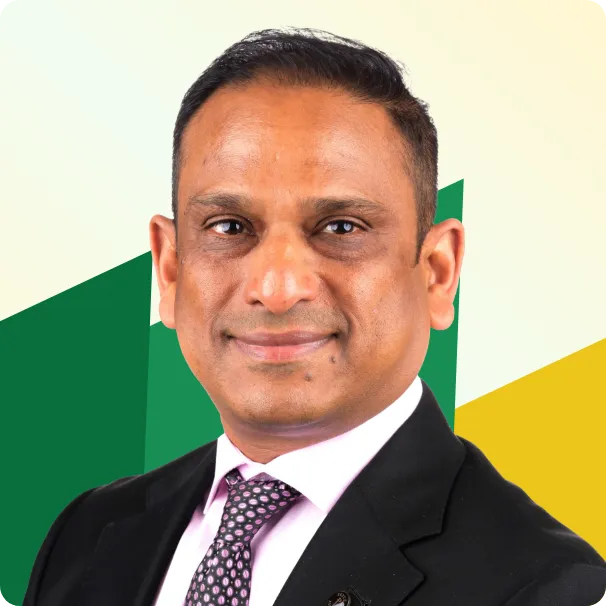

Session CC7 : Contract: Bridges - not Walls
Abstract - This presentation explores the critical relationship between contract management and project management, challenging the traditional view of contracts as administrative burdens and repositioning them as strategic tools for project success. Core Premise The presentation addresses a fundamental question facing project managers: Are contracts merely bureaucratic obstacles or powerful instruments for project success? Through interactive elements and practical frameworks, I will demonstrate how contract knowledge can transform project outcomes and significantly reduce common project risks. Key Themes and Content Interconnected Lifecycles: The presentation establishes a parallel between project management and contract lifecycles, showing how both processes share common phases—initiation, planning, execution, and closure. This alignment reveals opportunities for project managers to leverage contract knowledge at each stage, from stakeholder analysis during initiation to obligation fulfillment during closure. The Contract Toolkit: Six essential components are identified as fundamental for project managers: Summary & Scope (providing legal weight to scope definitions), Definitions & Terminology (preventing misunderstandings), Terms & Conditions (covering payment, intellectual property, and legal obligations), Service Delivery Specifications (translating methodology into contractual language), Performance Metrics & SLAs (establishing measurable accountability standards), and Change Management Procedures (formalizing scope and timeline modifications). Scope Management Focus: A critical emphasis is placed on scope creep, which affects 60- 70% of projects. The presentation demonstrates how contract-based scope management significantly reduces this risk through clear scope statements, detailed specifications, formal change request protocols, contingency planning, and separation of scope changes from new project requests. Interactive knowledge checks reveal that change request protocols are the most effective strategy, with 88% effectiveness in reducing scope creep. Building Contract Competency: The presentation outlines practical strategies for integrating contract knowledge into project management practice, including building relationships with legal and procurement teams, embedding contract checkpoints at key project milestones, monitoring compliance alongside project performance, and adhering to contractual change processes. Interactive Learning Elements: Throughout the presentation, interactive polls assess audience confidence levels in contract handling and identify common implementation challenges, including limited legal expertise access, time constraints, organizational silos, and lack of contract training. Conclusion The presentation concludes with the metaphor of contracts as "bridges, not walls"—connecting project elements and stakeholders rather than creating barriers. The key message emphasizes that understanding the interconnected nature of project and contract lifecycles, utilizing the contract toolkit, and developing contract competency can significantly improve project performance metrics and overall success rates. This paradigm shift positions contract knowledge as an essential competency for modern project managers seeking to enhance their professional effectiveness and project outcomes.
Speaker :


Session M1 : Navigating divergent imperatives: A multi-level project control framework for owners and deliverers in capital works
The governance of capital works projects is often challenged by the divergent objectives and success criteria of the two primary contracting parties: the Project Owner and the Project Deliverer (Contractor). While traditional project control paradigms frequently assume a unified approach, we can also argue that such a model is insufficient to manage the inherent goal disparity and information asymmetry that define the Owner-Deliverer relationship. We therefore present a framework for differentiated project controls tailored to the unique imperatives of these two key stakeholders. It assumes that the Owner and Deliverer require their own distinct control mechanisms to mitigate problems and align actions with their respective strategic interests. Owners are primarily concerned with long-term value, benefit realisation, and strategic return on investment, whereas Deliverers are focused on contractual execution, operational efficiency, and project profitability. These differing perspectives necessitate tailored project control functions. The proposed framework is structured across three hierarchical levels: 1. Project Level: Differentiated controls focus on Owner oversight of value and quality versus Deliverer management of cost and schedule efficiency. 2. Programme Level: Coordinated controls manage inter-project dependencies and resource optimisation to achieve broader strategic benefits for the Owner and operational efficiencies for the Deliverer. 3. Portfolio Level: High-level controls align the entire collection of projects and programmes with the Owner’s overarching investment strategy or the Deliverer’s long-term business health and market position. A central tenet of this framework is the principle of verifiable knowledge – addressing the critical question, "how do you know that you know?" We explore how robust, data-driven information systems, including BIM and data analytics, are essential for providing the verifiable evidence needed for effective control by both parties. Furthermore, we’ll touch on the distinct quasi-judicial role of the Superintendent in construction contracts as an independent certifier, acting as a crucial element within the contractual control environment. This presentation will detail the components of this multi-level framework. It offers a more nuanced model for project governance that acknowledges and manages the divergent interests inherent in capital works, aiming to enhance transparency, improve strategic decision-making, and foster more successful project outcomes for all stakeholders.
Speaker :


Session M2 : Effective Schedule Risk Management using the Risk Driver method - a case study from Rozelle Interchange on the Safran Risk
Project Quantitative Schedule Risk Analysis (QSRA) has become a well-established method for assessing uncertainty early in the project lifecycle. Based on the authors extensive experience on both pre-contract and execution phases of complex infrastructure projects, this presentation will offer practical insights from a recent infrastructure mega-project, into the application of QSRA through the execution phase of a project, and how this continues to offer benefits to improve project delivery outcomes, including: 1. Considerations when transitioning from pre-contract to execution schedule risk management, identifying root causes using Risk Drivers vs consequences. 2. What does the first real schedule baseline and implementation phase schedule risk model say? 3. Periodic QSRA check-ins vs Full QSRA analysis and their differences. 4. Subtitles of QSRA vs QCRA and how they can affect the Risk Analysis 5. Interpreting the results, Correlation Tornado’s vs Risk by Exclusion 6. Effective communication of results to execution team
Speakers :



PD.4-M : Women in Project Controls – Importance of Mentors, Sponsors and Coaches
Speakers :





Session M4 : The Language of Control - Why Words Matter
The presentation discuss how many times is the disagreement on a project really just a matter of different understanding for the same word? That is the key point we make in our presentation, ""The Language of Control - Why Words Matter."" As a result of the complexity of projects today and the way terms are applied in shared areas, creating clarity with definitions is at least a necessity for clear communication between teams, and at best a prerequisite for success. Main points discussed: Estimating – Case study on the benefits on implementing a standardized estimating framework and getting consistency, particular focus how standardized language aids this. Planning - Highlight how “level of schedule” is often misunderstood and redefined between projects and organisation. We also point out some other ambiguous terms and discuss how a unified framework and shared definitions can help. Delay Analysis - Discussion around Concurrency and how term is often misunderstood. Quick overview of methodologies. Cost Management – Discussion around the word “Contingency” is often misused and how confusing it for management reserve or can lead to issues.
Speakers :




Session M5 : Integrated Project Controls The Easy Way To Achieve It
Achieving truly integrated project controls is often easier said than done. Throughout my career, I’ve navigated the implementation challenges and learned what works and what doesn’t. In this presentation, I’ll share insights on overcoming obstacles, simplifying complexity, and making integration achievable. What Are Integrated Controls? Integrated project controls can mean different things to different stakeholders, leading to complexity that is difficult to maintain. Instead of starting with an overly ambitious system, defining simple, scalable goals will help gain buy-in and expand functionality over time. Are There Critical Functions? Change and performance management are at the core of integrated controls—not just reporting. Understanding this distinction can elevate a system from tracking data to driving strategic success. I will explain why these functions are crucial and how they shape an effective integrated controls environment. Is Technology the Answer? Technology plays a vital role in project controls, but it’s not a one-size-fits-all solution. The key is aligning tools with operational needs and strategic goals. I’ll share real-world implementations, highlighting the successes, challenges, and lessons learned along the way. Integrated project controls doesn’t have to be overwhelming. By focusing on key functions, defining clear objectives, and leveraging technology effectively, organisations can build sustainable and efficient systems. I’ll cover real-world strategies to simplify the process and make integration work for you. Conclusion If you are new to this journey or in the midst of transformation, join me as I share the trials and tribulations of nearly 30 years across multiple industries implementing controls to provide consistency and transparency to project delivery.
Speaker :


Session M6 : Leadership Impact on Project Controls and Decision Making
Control systems are essential to any project's success. Yet, the hard truth is that no matter how advanced they are, it's the caliber of leadership decisions operating within those systems that ultimately defines the outcome. While organizations invest heavily in advanced project management tools, analytics, and reporting structures, the critical factor that transforms data into successful outcomes remains largely overlooked: executive leadership behavior. This masterclass reveals how leadership psychology directly impacts project controls effectiveness and decision-making quality, drawing from the experience of 100+ executives across industries ranging from construction and engineering to technology and healthcare. The Hidden Challenge: Despite robust project controls frameworks, 70% of projects still fail to meet their original objectives. The root cause isn't technical—it's behavioral. Project leaders struggle with three critical leadership gaps that undermine even the most sophisticated control systems: 1. Decision Paralysis Under Pressure: When facing incomplete data or conflicting priorities, leaders delay critical decisions, causing cascading project delays and budget overruns. 2. Information Overload Without Strategic Focus: Advanced reporting systems generate massive amounts of data, but leaders lack frameworks to distinguish between urgent noise and important signals. 3. Weak Stakeholder Influence Without Authority: Project success depends on influencing diverse stakeholders—clients, vendors, team members, executives—but technical experts often lack the leadership presence to drive alignment. The Solution Framework: This session introduces the VRHS Leadership System specifically designed for project environments: V - Values Driven Vision: Define a compelling future state that aligns with your core values and serves as your North Star for all leadership decisions. R - Resistance Removed: Learn the tools to Identify and eliminate the internal barriers, limiting beliefs, and external obstacles that prevent you from performing at your highest level. H - High Performance Habits: Learn the science behind establishing consistent leadership practices and systematic approaches that compound over time to create sustainable excellence and leadership impact. S - Support for Success: Build strategic relationships, systems, and resources that amplify your effectiveness and accelerate your leadership growth. Key Takeaways: Learn the facts behind, Why acting like a leader always fails - and the leadership transformation required to become an authentic leader. Learn about the 3 hidden mental roadblocks that sabotage the project decision making process and practical tools to overcome it. The 4-step executive mindset framework that rewires your thinking from the inside out. The science behind executive presence and the practical steps to develop. These aren't theoretical concepts—they're battle-tested tools currently used by project leaders managing multi-million-dollar initiatives. Target Audience: This masterclass is designed for decision-makers, project managers, program directors, construction executives, engineering leaders, and anyone responsible for delivering complex projects on time and within budget. Interactive Elements: The session includes interactive elements; visual presentation slides and encourages audience participation. The future of project success isn't about better software or more sophisticated controls—it's about better leadership. Join this masterclass to discover how small shifts in leadership behavior create dramatic improvements in project outcomes.
Speaker :

Session M7 : Advancing the Project Controls Profession: Diploma Graduation Celebration
This session celebrates the professional development and achievements of project controls practitioners who have completed the 11147NAT Diploma of Project Controls, highlighting the practical skills and knowledge gained throughout the program. It is part of the Young Professionals initiative supported by PCE AUS and ACES. The session will feature a formal acknowledgment of graduates, with diplomas handed over by ACES members. Designed to inspire both emerging and experienced professionals, it emphasizes the advancement of the project controls profession in Australia, showcasing the value of education, skill development, and professional achievement in driving the future of the industry.
Speakers :



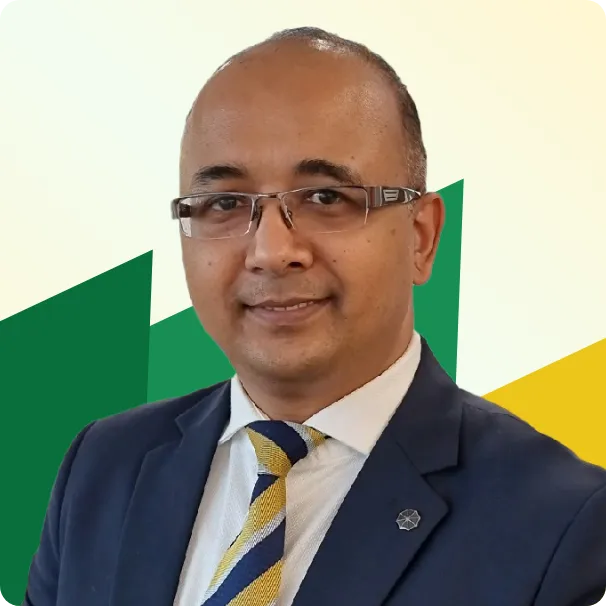

Session I1 : Using Business Intelligence Dashboards for Project Reporting
Project reporting has been something that we have adapted to the changing technology. We look at the use of Asta Vision and its integration with Power BI Dashboards to enhance project status reporting. This presentation was created specifically as a mock-up of what we have built-in previous / current clients. We have the portfolio of programmes from different areas. This ensures the programmes are the most current versions and source of truth for the business.
Speaker :


Session I2 : Bridging Portfolio Delivery & Enterprise Oversight
Riskonnect’s Jack Flynn, Director of Product Management – PPM, explores the powerful intersection of enterprise performance, project delivery, and risk. Jack will explain how connecting PPM, project risk, and ERM can unlock stronger business outcomes. This session shares practical strategies to bridge portfolio delivery with enterprise oversight and is ideal for professionals focused on project management, enterprise risk, and organisational performance.
Speaker :


Session I3 : AI-Powered Planning: How ConstructMind is Transforming Project Controls
Speaker :


Session I4 : Chaos to Clarity -Project Control using Spatial Scheduling
20 years ago we planned projects on walls. Today we Plan them in electronic boxes. And we can’t see them anymore! J. Riksts- Alderman – KPMG With projects making up approximately 1/3rd of the worlds GDP (HBR Dec 2022) and the success rate of for achieving Budget(47.9%) + Schedule (8.5%) + Benefits (deliverables) 0.05% - (how big things get Done) – Bent Flyvberg & Dan Gardener. It is vitally important that Project management gets greater control of project schedules and outcomes. One of the major issues effecting how people control projects is Cognitive Loading and Overloading. The mental effort – how hard our brain has to work at a task/s -with a risk of overloading that leads to decreased performance, errors and stress. Creating Large, Complex Schedules is one of our greatest cognitive challenges. The majority of todays schedules are created using Tabular scheduling – This creates schedules using tables or spreadsheets - listed in rows or columns and presents that data in Gantt Chart or Kanban formats. Spatial Scheduling uses graphics without rows and Columns and utilises X Y and Z axes. Tasks can be moved 360%, allowing for flexibility, creative layouts and real time adjustments in organising.
Speaker :



Session I6 : AI Is Here—Now What? Preparing Program Controls for the Next Era
The integration of artificial intelligence into program and project controls is not a distant future—it's happening now. As AI tools begin to automate routine tasks and streamline data processing, the role of the program controls professional is undergoing a profound transformation. This presentation explores how AI is reshaping the skillset required to thrive in this evolving landscape, and what professionals at all career stages can do today to stay ahead. Drawing on nearly 25 years of global experience in program delivery, I’ll share insights into how AI is being practically applied across scheduling, cost, risk, and reporting functions. While these tools are beginning to eliminate the "grunt work"—manual data entry, repetitive reporting, and fragmented analysis—they also expose a new frontier of opportunity. The future of program controls lies not in mastering isolated specialisms, but in developing the ability to span them, connect them, and tell compelling stories with data. As AI takes on more of the mechanical tasks, the human role becomes more strategic. Professionals will need to evolve into data-savvy analysts, integrators, and communicators. Understanding the principles of data alignment, system integration, and advanced analytics will be essential. Equally important will be the ability to interpret insights and translate them into meaningful narratives for stakeholders—from site teams to executive boards. We’ll consider the real-world AI tools already in use today, and discuss how, ultimately they will need to integrate across the full spectrum of controls disciplines. While the technology is advancing, the opportunity to lead its adoption lies with us. You don’t need to be a data scientist to get involved. Understanding the underlying principles, asking the right questions, and engaging with emerging tools are actions you can take now. This session is designed for industry professionals who want to future-proof their careers and for executives seeking to build high-performing, forward-looking teams. Whether you're just starting out or leading delivery on major programs, the message is clear: AI won’t replace program controls professionals—it will elevate those who are ready to adapt, learn, and lead.
Speaker :


Session I7 : Beyond Gantt Chart: Enabling Data-Driven Strategic Planning in Capital Portfolios
In asset-intensive organisations, project controls are often seen as technical or transactional functions — focused on reporting, scheduling, and cost tracking. But with the right structure and focus, project controls can play a far more strategic role. This session explores how portfolio-level scheduling and integrated controls can shift project controls from an administrative function to a strategic enabler. Drawing from practical experience in local government and public sector capital portfolios, Mikaeil will share how enhanced scheduling practices, data integration, and governance alignment can improve visibility, support prioritisation, and enable better investment decisions. Participants will gain insights into how to elevate project controls by embedding them into enterprise-level planning, decision-making, and performance monitoring — ultimately building a more mature and strategically aligned capital delivery environment.
Speaker :


Mid-Morning Coffee Break @ Olympic Room B & Betty Curthber Lounge

Lunch Break @ Olympic Room B & Betty Curthber Lounge

Afternoon Coffee Break @ Olympic Room B & Betty Curthber Lounge

Project Controls Networking Evening Supported by PMI Melbourne Chapter at Olympic Room B (open for everyone)

Stadium Tour
© Project Controls Expo 2025. All rights reserved







